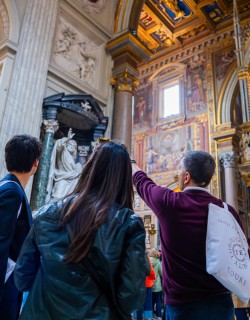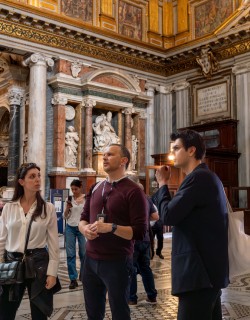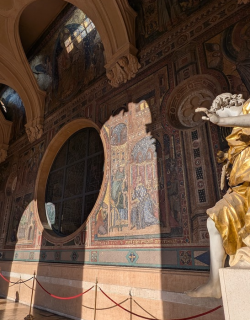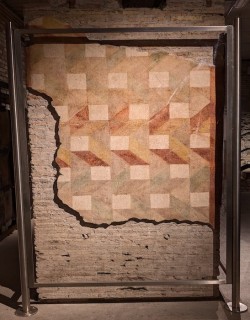I not only bribed the Trevi, as everyone does, I also—and I invented this myself—dipped my hand into the Bocca della Verita at Santa Maria Cosmedin and vowed to return.
- Sigmund Freud
Walking along the banks of the Tiber in central Rome yesterday on a stormy autumn evening, I decided to take a quick detour to one of my favourite places in the city. You might not have heard of the ramshackle church of Santa Maria in Cosmedin, with its magnificent Cosmatesque floor, medieval schola cantorum and 13th-century baldacchino altar. But you’ve almost certainly been to its entrance portico - it’s here that the iconic and mysterious Bocca della Verità, or Mouth of Truth, glowers at the endless streams of tourists that come to risk everything by sticking their hands into the ancient bearded mouth. According to legend the priceless pavonazzetto marble face punishes liars by biting off the offender’s limb, and so was drafted in as an arbiter when deals were struck in the medieval city, or when the fidelity of a mistrustful husband’s wife was brought into question. Rich with legendary accretions and historical symbolism, the Bocca della Verità conceals a tangled skein of fact and fiction behind its weather-beaten features- read on for our guide to everything you need to know about the iconc glowering face!
1. The face was probably originally a drain cover
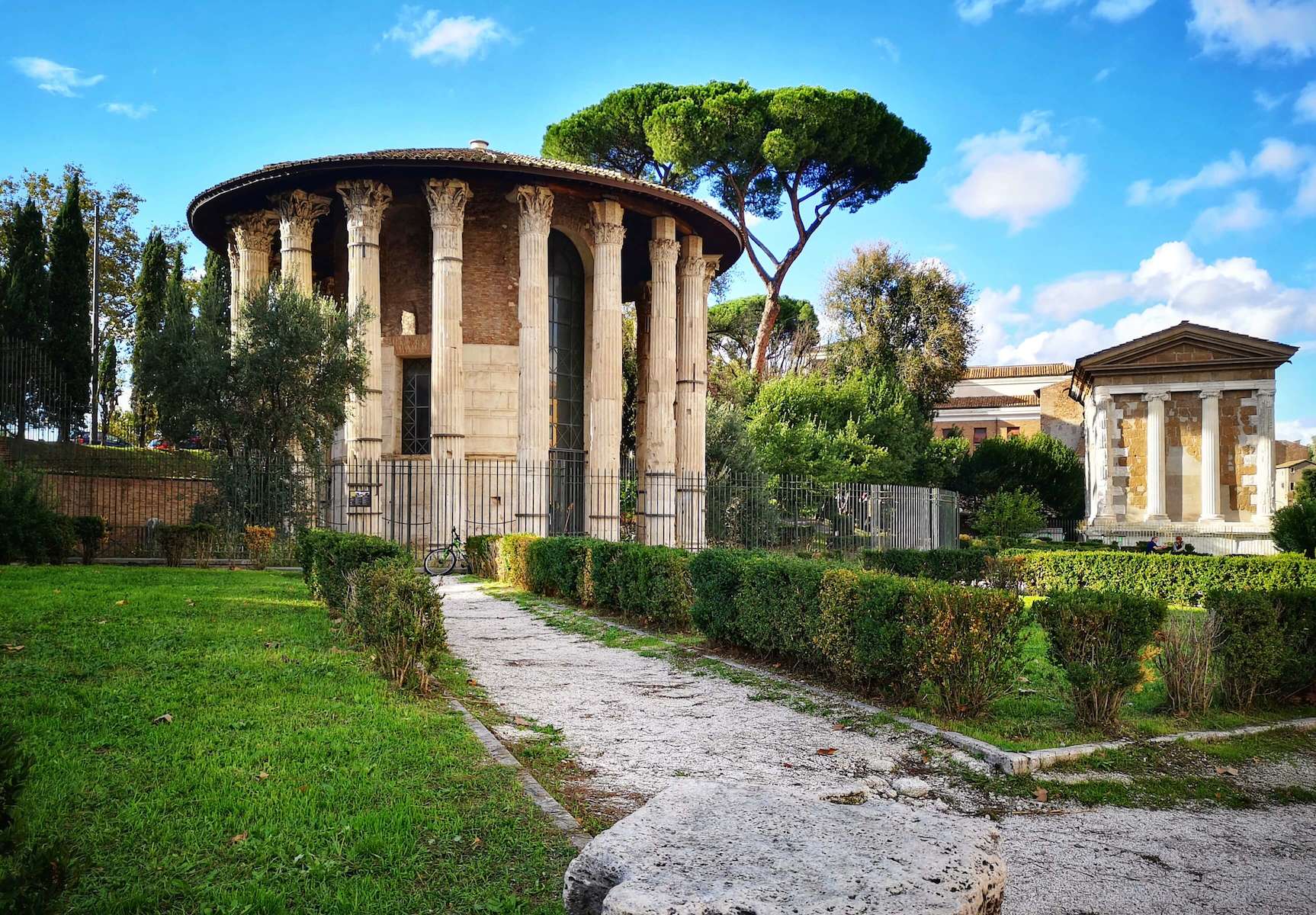 The ancient temple of Hercules Victor, a possible original location of the Bocca
The ancient temple of Hercules Victor, a possible original location of the BoccaGiven the important position that the Bocca della Verità holds in the Roman cultural imagination, it may come as some surprise that its origins are rather humble. Although the exact original function of the massive mask-like face in antiquity is still open to question, given the shape and wear-patterns in the marble the most plausible hypothesis holds that the huge disc was a originally a decorated ceremonial drain cover, possibly for the nearby Cloaca Maxima - ancient Rome’s massive main sewer.
The still-extant sewer flowed into the river Tiber below ground just a few away from Santa Maria in Cosmedin, where the iconic Ponte Rotto stands today. Elaborately carved marble drain covers taking the form of faces were not unknown in antiquity. In the 16th century a mask very similar to the Bocca was set into the floor of the Palazzo della Cancelleria, starting a fashion craze for recovered ancient drain covers in Rome’s most important palaces.
The enigmatic anthropomorphic face that would become the Bocca della Verità is likely to represent the sea god Oceanus, as he sports the god’s distinctive crab-like pincer horns. As the mystical and life-sustaining source of all water on earth, Oceanus was a fitting figure to portray watching over the recursive rushing flow of water through the ancient city’s drains and towards the Tiber itself.
This is just one hypothesis, however; other scholars argue that the symbolic resonance of the mask means that it was originally set into the floor of an important cult building such as the nearby circular temple of Hercules Victor or the altar of Hercules known as the Ara Maxima that once stood on the site of the present church, a place where ancient Romans came to swear oaths and vows.
2. The Bocca della Verità was only moved to its current location in the 1630s
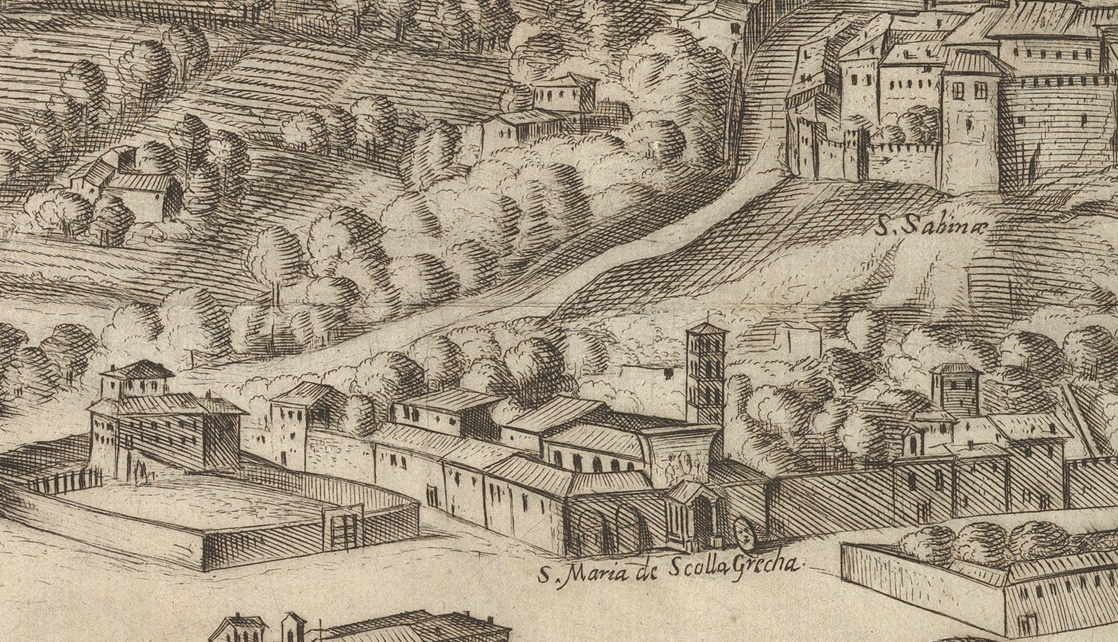
Despite these learned and plausible hypotheses, we know absolutely nothing for certain about the Bocca’s story before 1450, when it first shows up in the historical records leaning against the side of the church. In Antonio Tempesta's detailed 1590s map of Rome, the huge face is clearly visible propped against the facade. It seems likely that it had lain nearby for many centuries however, as details in the 12th-century decorations of the church depict masks very similar to the Bocca.
At the start of the 17th century the marble was mounted onto the leftmost edge of the church facade, but we have to wait until 1631 before the mask was given its current arrangement set proudly into the covered narthex of Santa Maria in Cosmedin, and where tourists line up patiently today.
3. The Bocca della Verità has been an arbiter of truth for over 500 years
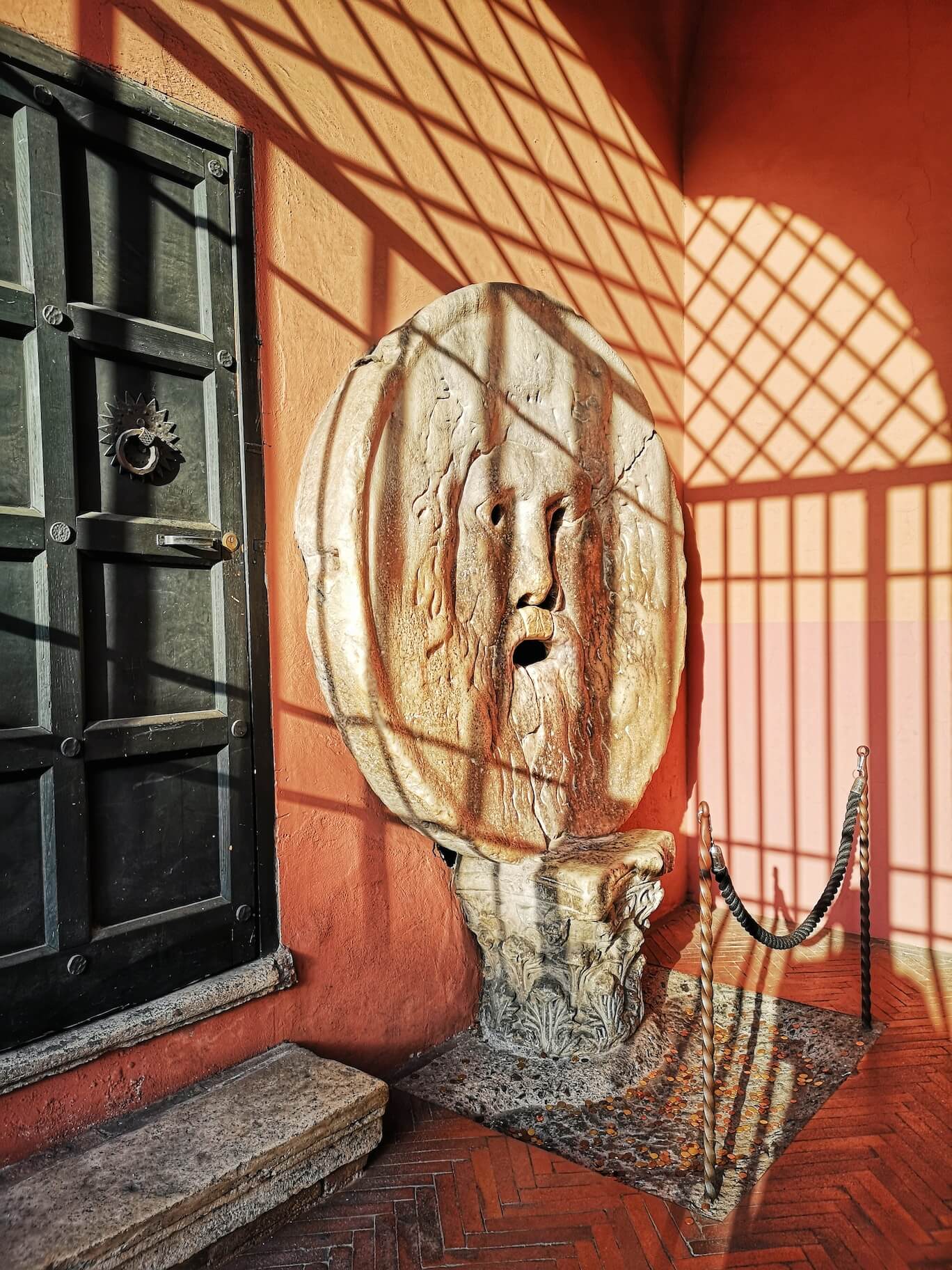
Whatever about its mysterious origins and murky early history, by the 15th century the mask had taken on new associations and importance in the symbolic and cultural life of the city. Perhaps giving credence to the theory that the Bocca originally adorned a site where oaths were taken and vows made, 15th-century sources recount that the weighty 1,300 kilo Phrygian marble face was believed to have the magical capacity to sniff out liars - in particular duplicitous and adulterous wives - by biting off the perjurer's limb when thrust into the mask’s mouth in a bizarre echo of medieval ordeal trials.
Whilst it’s questionable whether the usually cynical denizens of early-modern Rome were quite so gullible as to give credence to the tale, as lovers of a good story the legend stuck: by the late 18th century the Bocca was arbitrating on all sorts of issues beyond the fidelity of the fairer sex, and its role as a numismatic polygraph had been enshrined in the popular imagination.
4. No hands have ever been recorded lost in the gaping Mouth
According to some of the more fanciful legends to have come down to us about the mouth, the Bocca della Verità really did have the ability to snap off the hands of malefactors - albeit via nefarious human means. The theory goes that if the presumed oath-breaker was already known to be guilty, confederates of the accuser or associated agents of justice would be secretly lying in wait behind the mask with hot brands, irons or knives at the ready. When the liar thrust their hand into the mouth, the concealed characters would set about the task of invisibly injuring the offending limb with gusto, proving to those watching on the dangerous power of the dread mask to deal judgement on deceivers.
Most accounts ascribe this practice to antiquity; given that the mask only took on its role as the scourge of deceivers after it was already leaning against the wall of the church in the 1450s the tale is clearly nonsense. Nonetheless it was frequently peddled to visitors to Rome on the Grand Tour by local guides in the 18th century, who never let the truth stand in the way of a good story!
5. There were ways to get around the Mouth’s dread judgement
Despite the seeming omniscience of the truth-dealing Mouth, popular legends recount that there were ways to confound its judgement. One of the most well-loved tales concerning the Bocca della Verità is a Renaissance tale recounting the story of a young Roman bride who took a lover in the frequent absences of her husband. Lacking the requisite discreetness to carry out the affair effectively, the woman soon aroused the suspicions of her prurient neighbours who wasted little time in bringing their concerns to her cuckolded spouse.
Despite her protestations of innocence, the husband demanded a public examination of her fidelity via the means of the Mouth, and so it seemed her fate was sealed. But the wife and her lover quickly hatched an audacious plan to get her off the hook. As she was being brought towards the site of her examination, her young paramour approached her in the street disguised as a madman, embraced her whilst spouting gibberish and carried on his seemingly-insane way. When the wife arrived at the Mouth, she swore that the only men who had ever touched her were her husband and that madman everyone had just observed accosting her. Thrusting her hand into the Mouth’s gaping maw, she remained unharmed, her honour secured.
6. Visitors have always treated the mask with scepticism
Although the legend of the Bocca della Verità is a venerable one, the elevation of the Mouth to one of Rome’s most-revered tourist attractions is a relatively modern phenomenon. The Grand Tourists of centuries past often noted and dismissed the face in their journals, chalking the legend down as just one more example of Roman Catholic gullibility. In his Voyage of Italy from 1670, Richard Lassels captured the skepticism of many of his peers when he wrote that ‘I rather believe it served in some old building for a gutter spout: I know Truth may speak loud, had have a Wide Mouth, but he that takes every wide mouth for the mouth of Truth is much mistaken.’ In an age of populists, misinformation campaigns and rampant fake news, perhaps we would do well to pay credence to Lassels’ caution!
These days a new generation of cynics attribute the popularity of the site with tourists from across the world to the fact that tour busses can stop right outside (a rarity in Rome), but the real reason for its popularity is due to the lure of the silver screen…
7. The Bocca della Verità is one of the Eternal City’s biggest movie stars
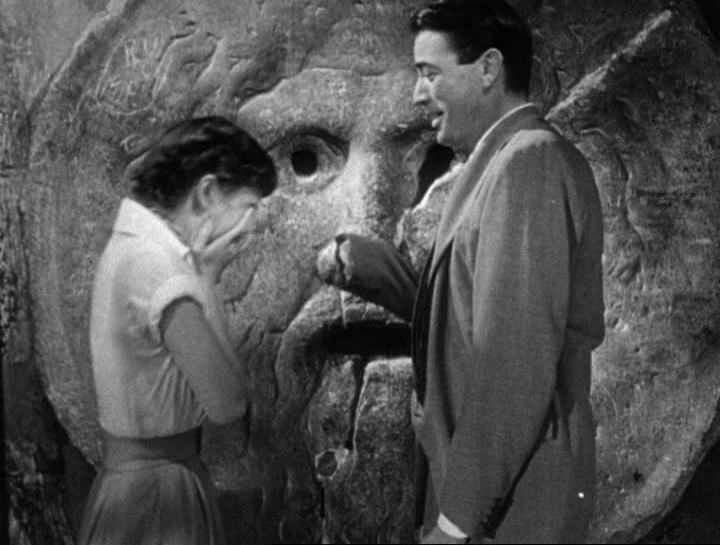 Audrey Hepburn and Gregory Peck in Roman Holiday (source Wikimedia Commons, CC license)
Audrey Hepburn and Gregory Peck in Roman Holiday (source Wikimedia Commons, CC license)
Right up there with Anita Ekberg’s night-time plunge into the icy waters of the Trevi Fountain in Federico Fellini's La Dolce Vita, it’s one of the most iconic moments in Roman celluloid history: midway through William Wyler’s classic Roman Holiday, Gregory Peck’s hard-boiled reporter Joe takes princess-on-the-run Audrey Hepburn on a whistle-stop tour of the Eternal City on his vespa. Stopping off at Santa Maria in Cosmedin, Joe recounts the legend of the Mouth, whereupon a nervous Hepburn gingerly places her hand within. Nothing untoward happens, but when it is Peck’s turn he begins roaring in agony as soon as he hesitatingly inserts his. Pulling it out, he demonstrates the apparently amputated arm to the panicking princess All is well, however, as Joe quickly reveals the ruse - his hand simply being hidden in his sleeve. According to cinematic lore, the ruse wasn’t in the script and Peck’s reaction really did frighten Hepburn - hence her tangible relief!
8. And finally, make sure you visit the church too!
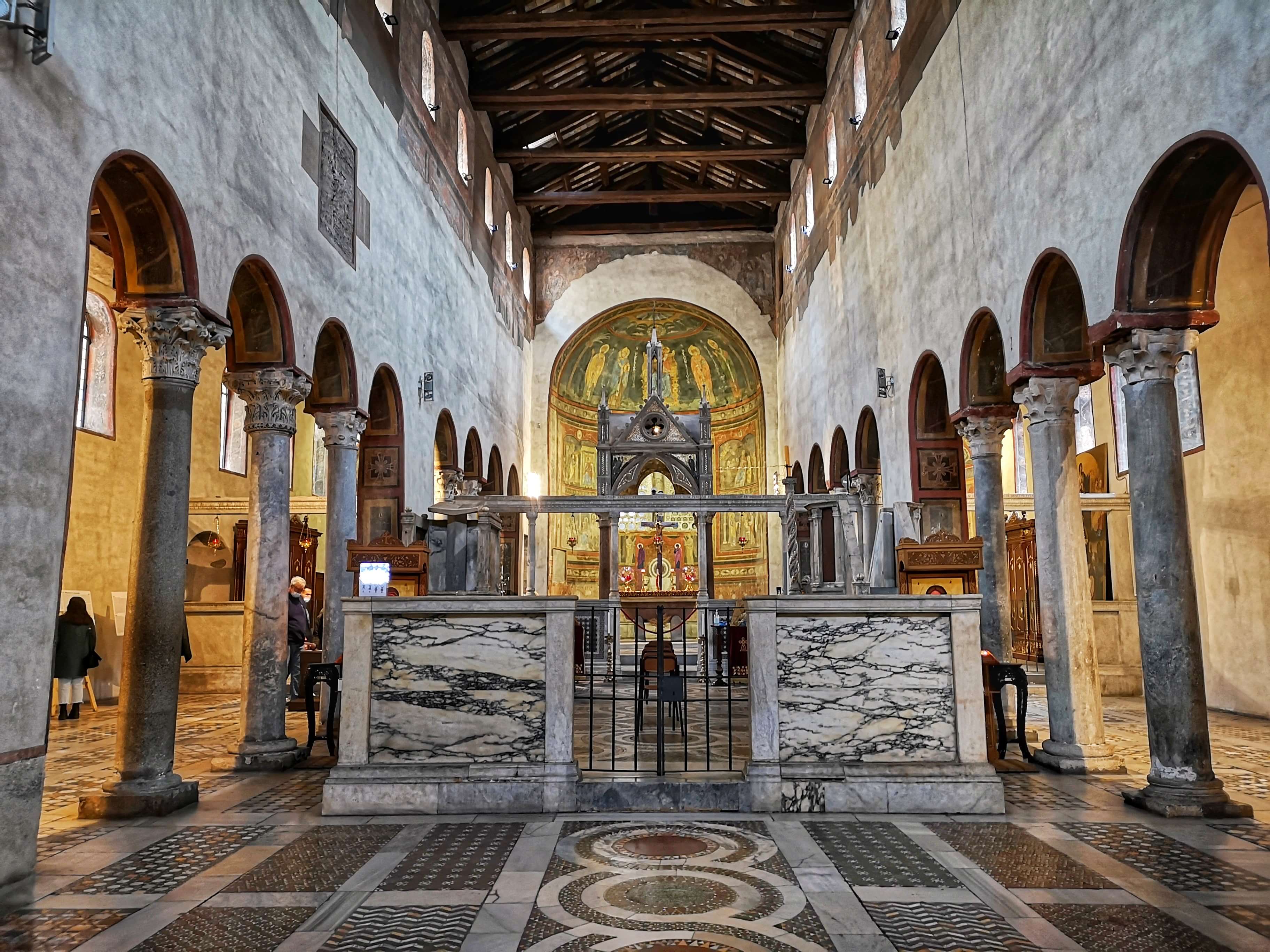
The vast majority of visitors that line up in the narthex of Santa Maria in Cosmedin to have their photo taken with their hand thrust into Oceanus’ mouth barely give the church itself a second thought, and certainly don’t bother stepping inside. Don’t make their mistake! Santa Maria in Cosmedin is a wonderful example of medieval architecture. The extremely tall brick campanile is one of the most beautiful in all of Rome, studded with decorative disks of purple and green marble. Don’t miss the impressive monument to the 12th century papal chamberlain Cardinal Alphanus in the narthex.
The tomb of Cardinal Alphanus in the narthex
Within, repurposed and mismatched ancient Roman columns divide the church’s nave and side aisles, whilst the floor decorated in the Cosmatesque style is one of the city’s masterpieces of medieval craftsmanship. At the centre of the church is a raised enclosure known as the schola cantorum, reserved for the choir singing the liturgy. In the Middle Ages this was a standard feature of ecclesiastical architecture, but as centuries went by it went out of favour and this is one of the very few, fascinating survivals. Don't miss the beautiful Gothic baldacchino over the altar, medieval frescoes and eery 8th-century crypt of Hadrian below, carved into the still-visible remains of the altar of Hercules itself.

